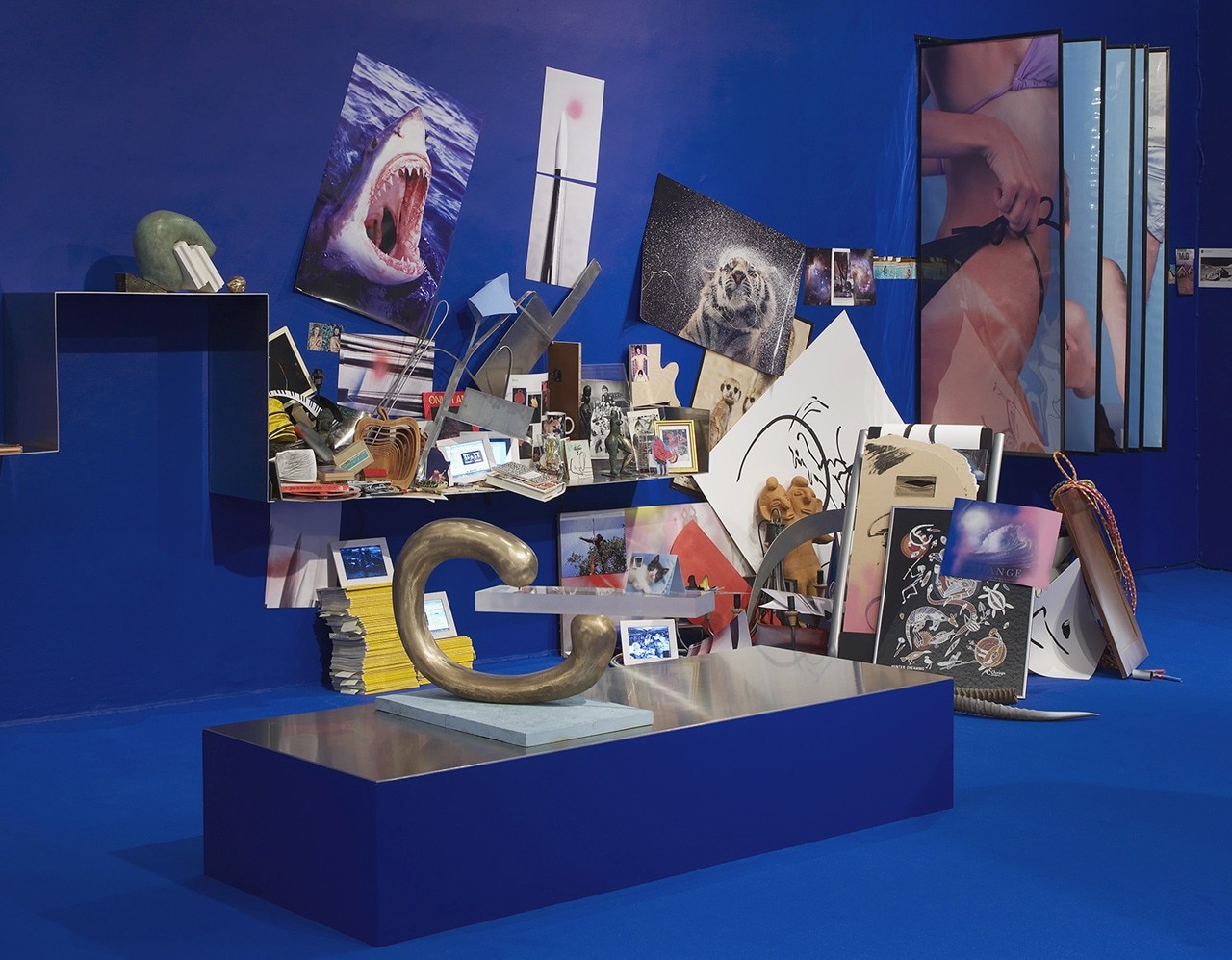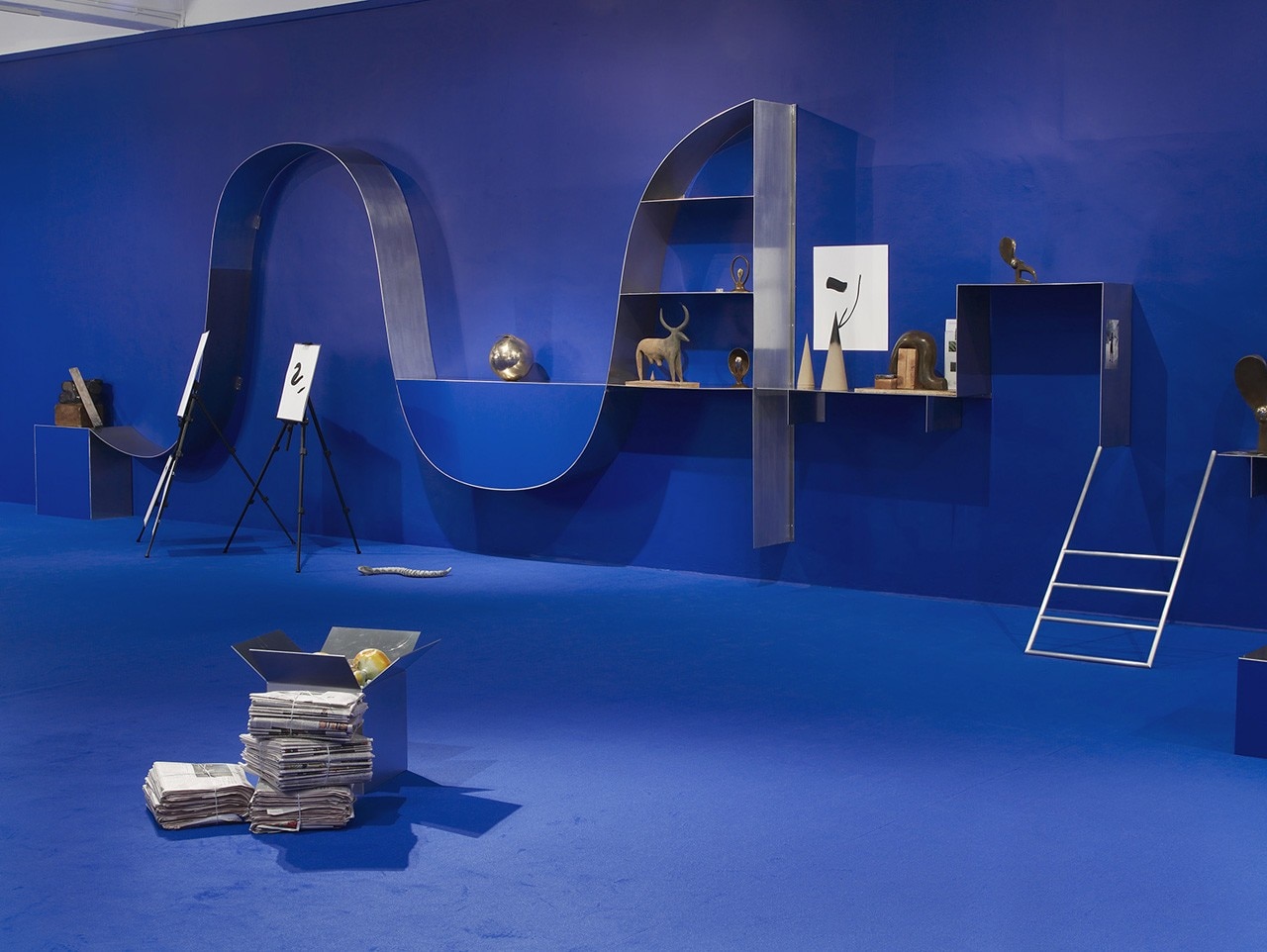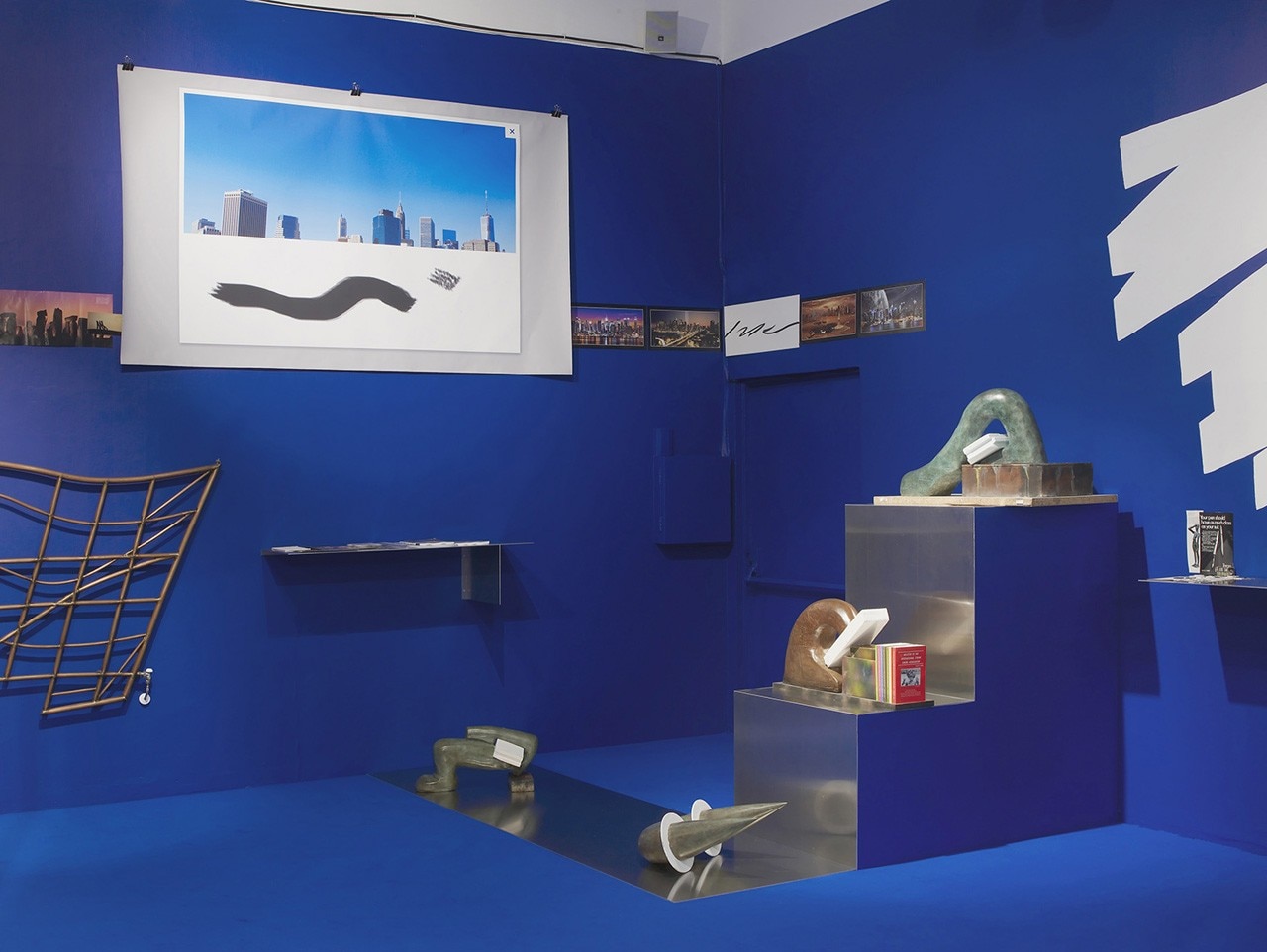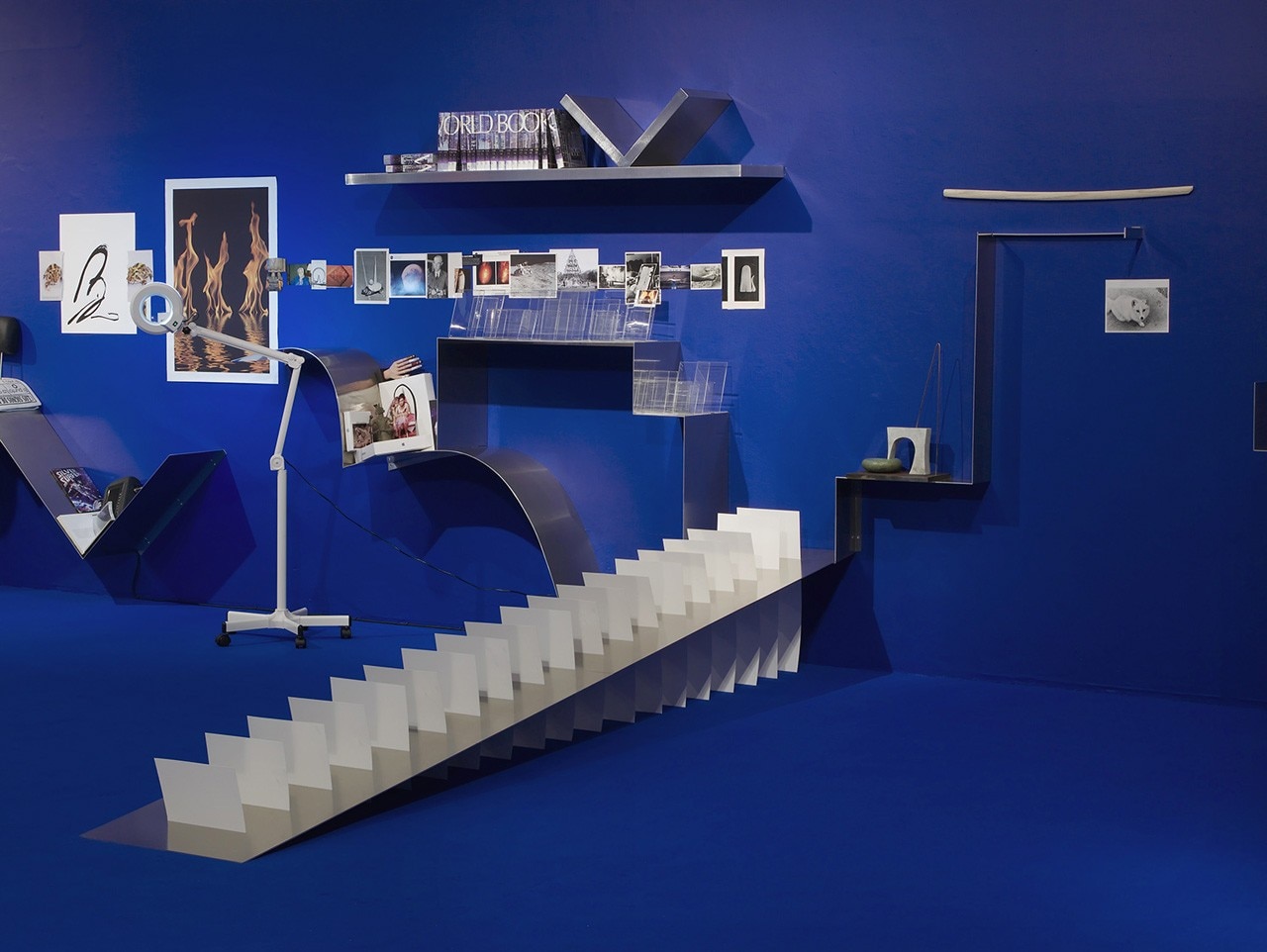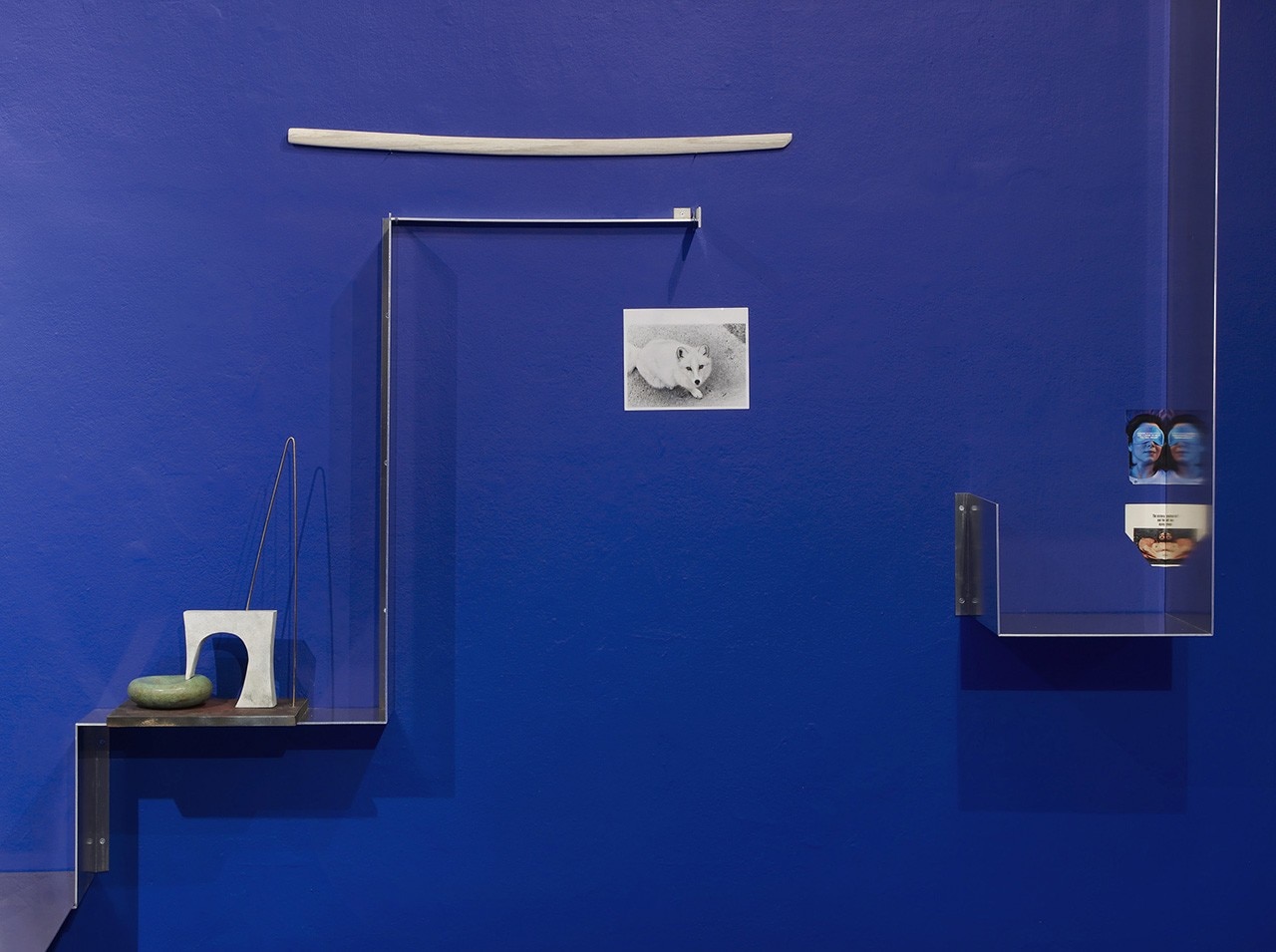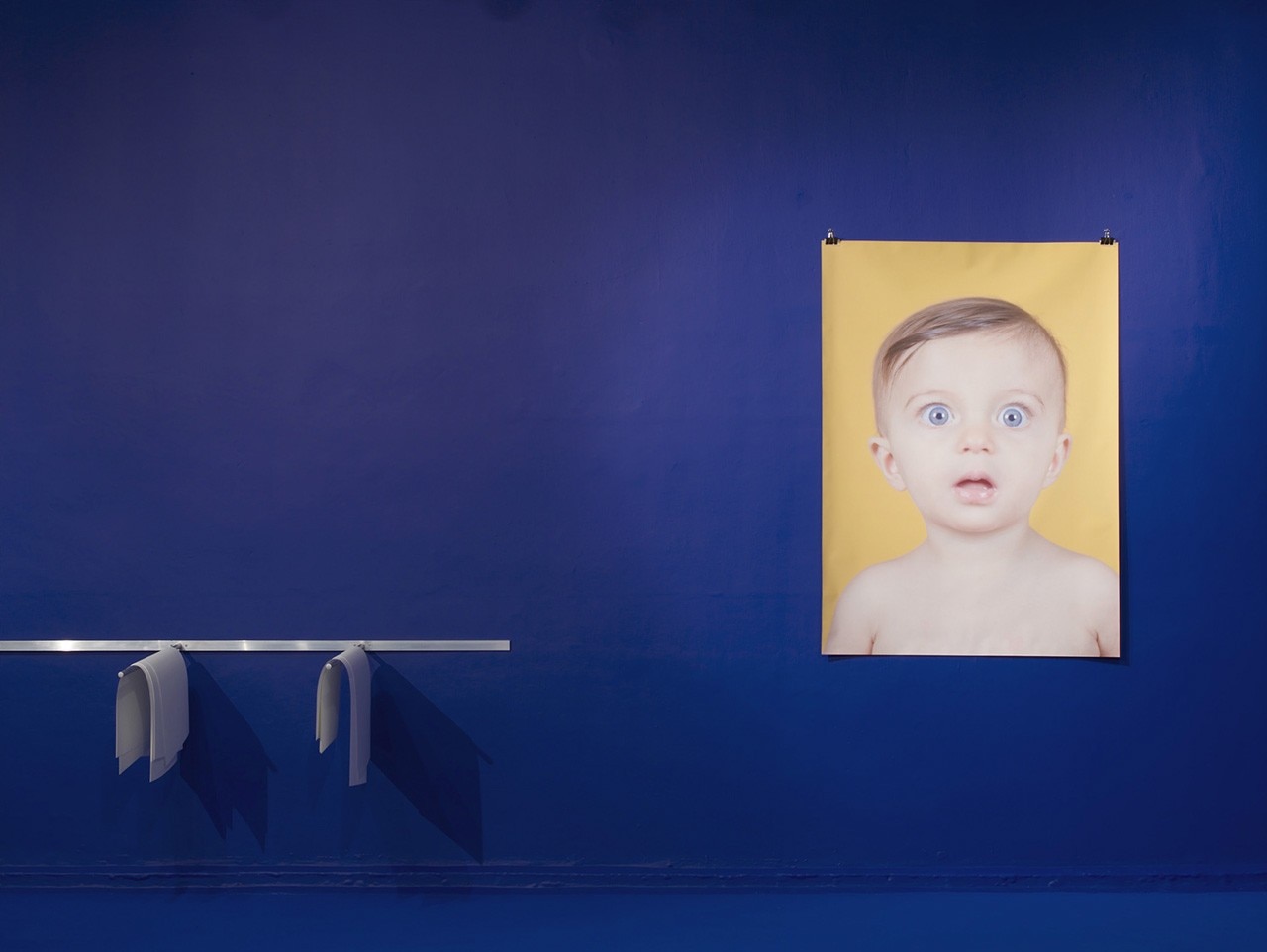
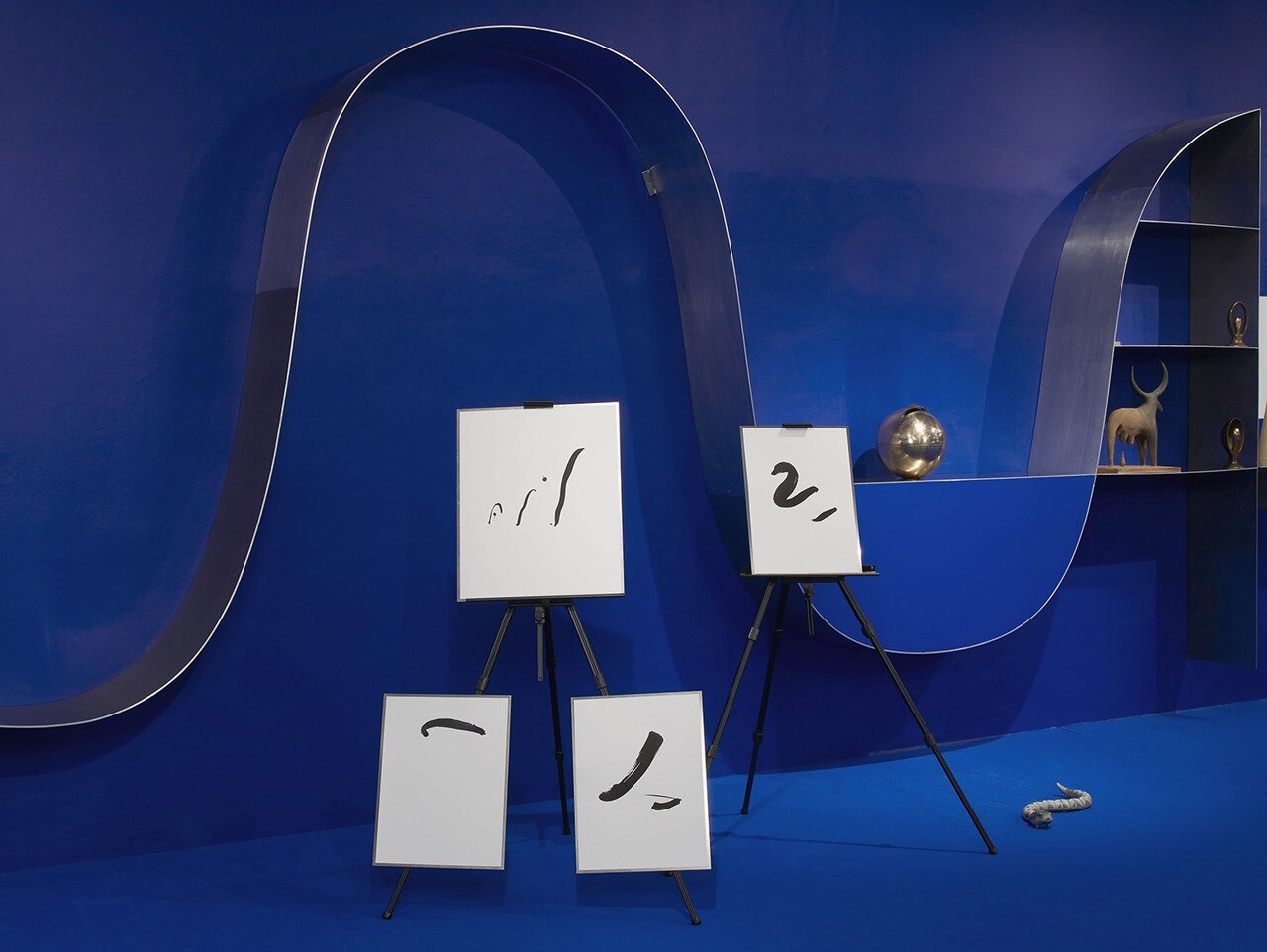
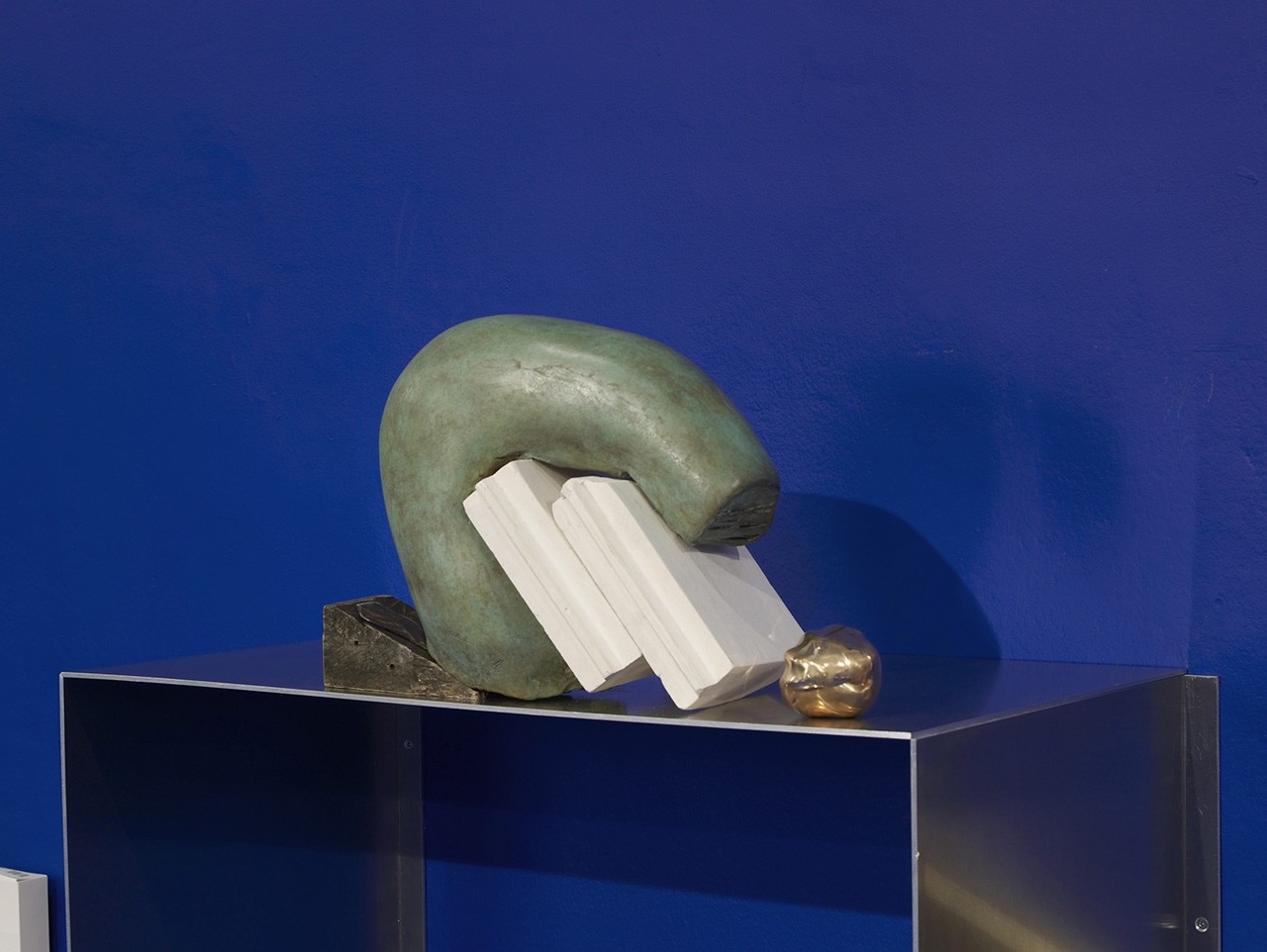
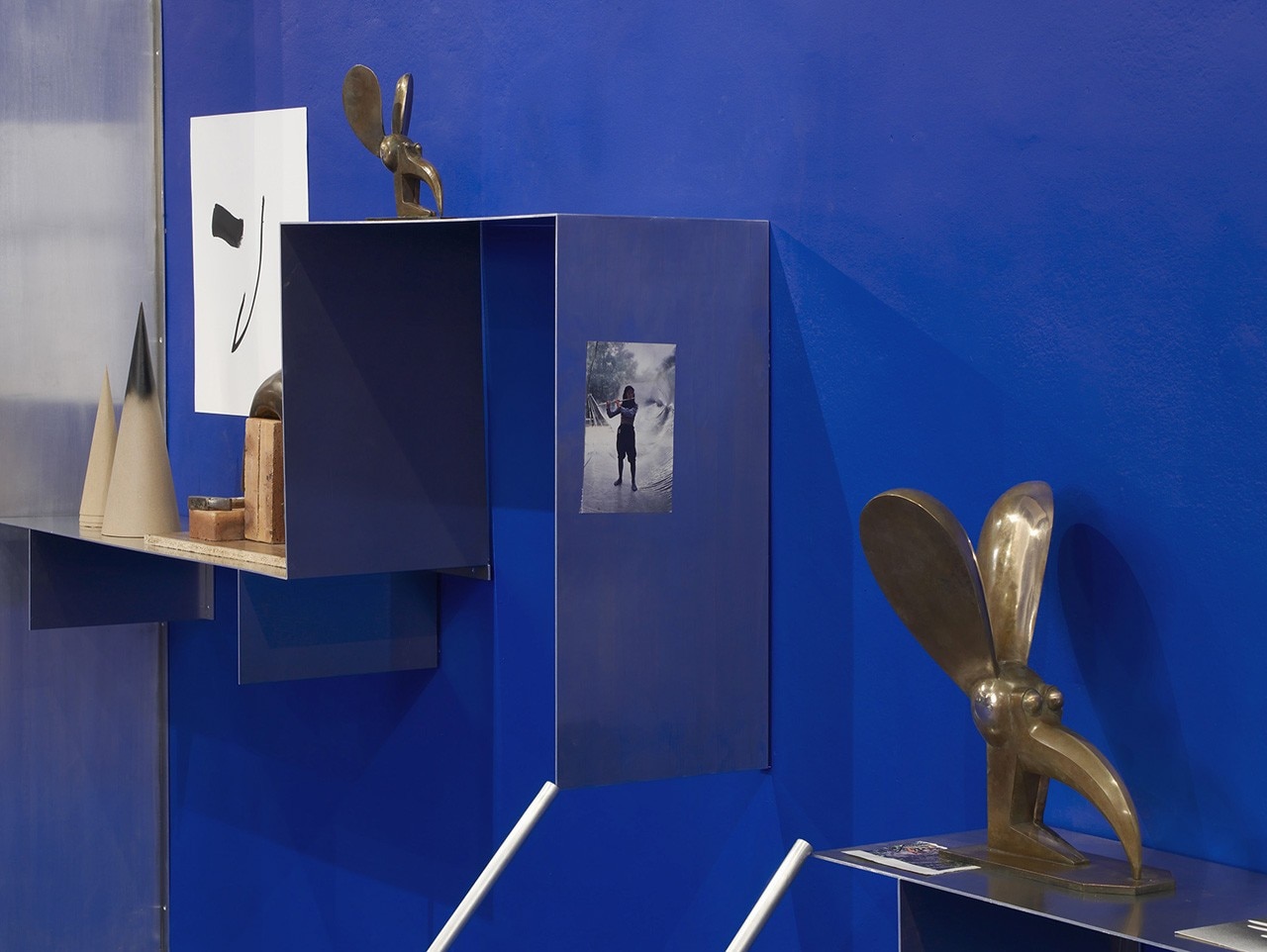
The last two walls are to be read not so much as a progression but more in synchronisation, one as the hidden face of the other. The artist defines the final part, containing the technological devices, as a 'shameless' space where there is no sense of guilt. It is also paradoxically a space of boredom, where the need to make sense of the world and question its origins reemerges, returning full circle to the starting point of the show.
So, not far from the white and feather-light Apple packaging we find a large, dusty encyclopaedia. It is as if at the end of the exhibition, the information that we have forced to shed weight, suddenly returned to reclaim its space.
